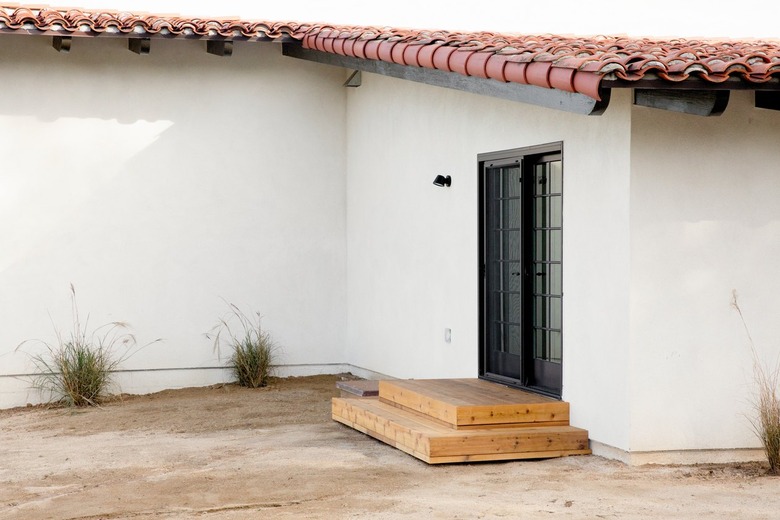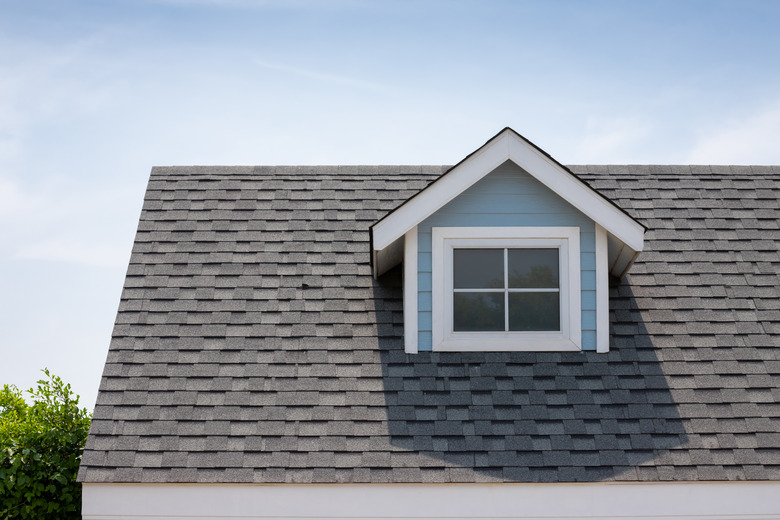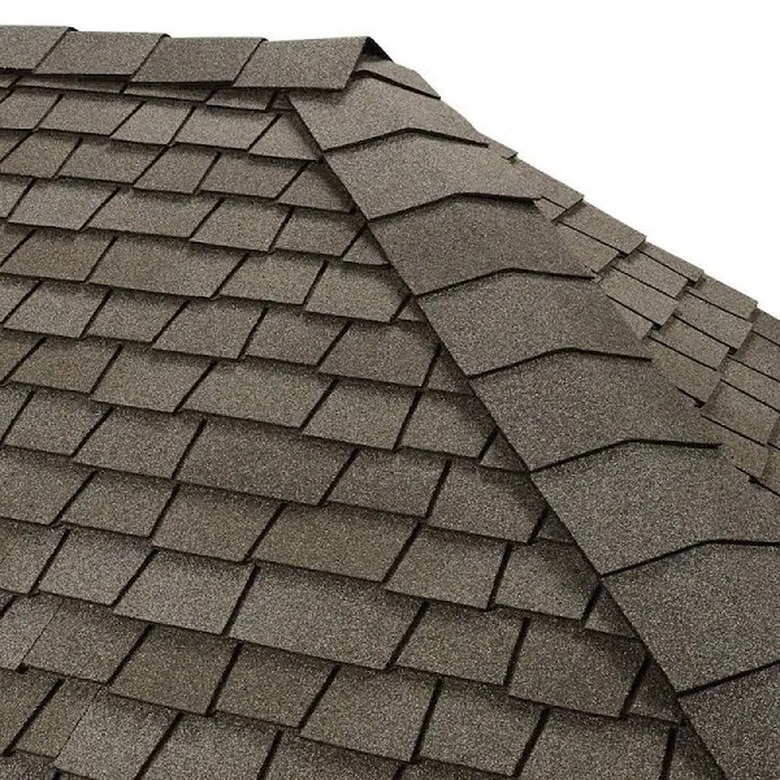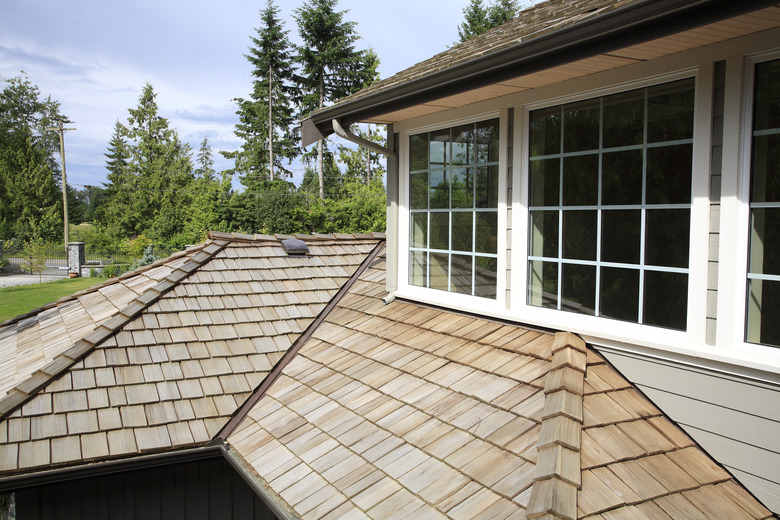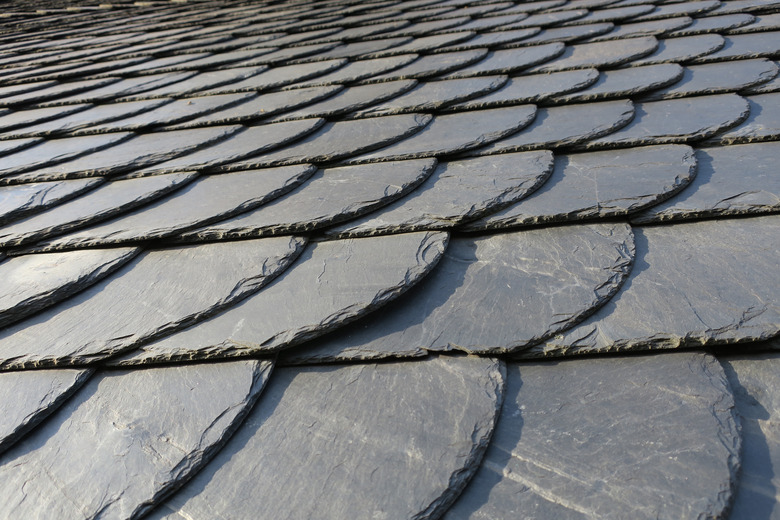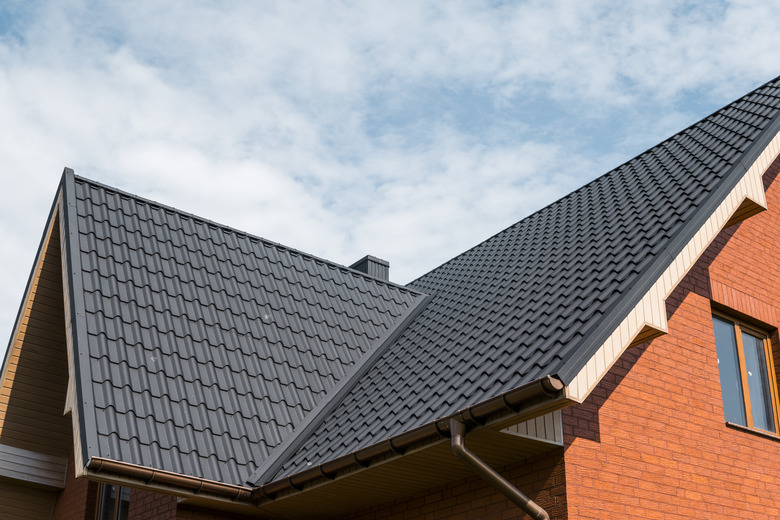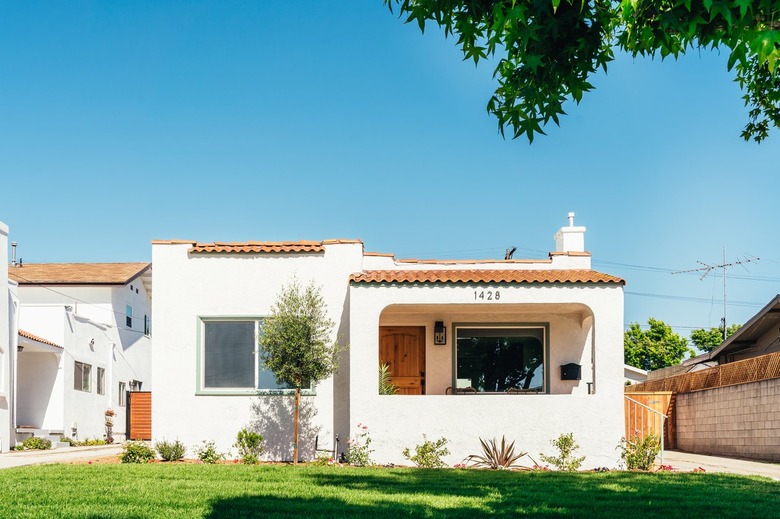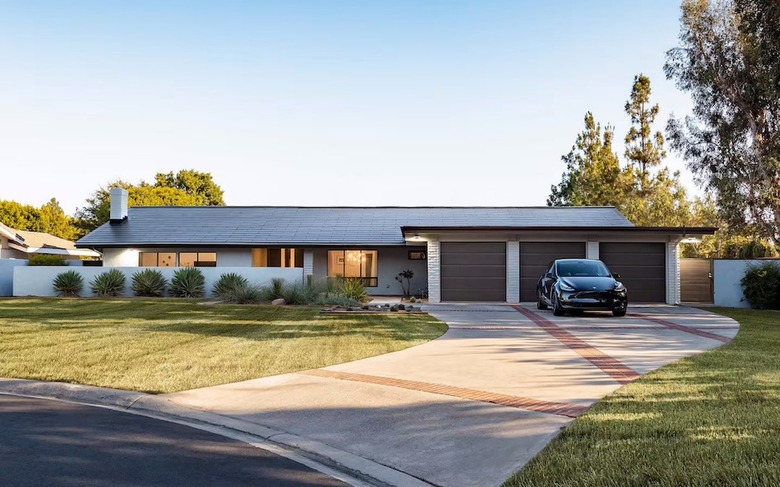How To Choose The Right Roof Shingles For Your Home
We may receive a commission on purchases made from links.
Installing a new roof on your home is a big project that requires you to make decisions about both the performance and aesthetics of your roof shingles. You want the roof to look nice, of course, but you also need to know that it will keep you warm and dry for many years to come without breaking the bank. Your local roofer is the best source of advice when determining what shingles will work well in your climate and on your particular home, but it's still nice to understand the types of roofing shingles before you speak to the pros.
3-Tab Asphalt Roof Shingles
3-Tab Asphalt Roof Shingles
Tried and true, 3-tab asphalt shingles grace 80 percent of the residential roofs in America. Made of asphalt and fiberglass, these shingles last about 20 years and are rated for good or better wind-resistance, with some withstanding winds up to 150 mph. They're fire-resistant, easy to install, and reasonably lightweight. They're also the least expensive option, coming in at about $85 to $150 per square. (A square is a roofing term that means 100 square feet.) Modern asphalt shingles also come in a wide range of colors.
Asphalt roof shingles are far from perfect, however. In the roofing world, 20 years is a fairly short life span. Although they are recyclable, you may not yet have an asphalt shingle recycling center near you. This can exclude asphalt from your environmentally friendly choices. Asphalt can also sprout algae in humid climates, so you'll want to purchase algae-resistant shingles if it's humid where you live.
Pros:
- Inexpensive
- Available in many colors
- Relatively lightweight
Cons:
- Not recyclable in all areas
- 20-year life span
Best Uses:
- Anywhere you need a fast and budget-friendly option
Architectural Roof Shingles
Architectural Roof Shingles
Think of architectural shingles like asphalt shingles on steroids. They're made from the same materials, but architectural shingles have an extra layer for increased durability and a more textured look. Architectural shingles also focus a bit more on aesthetics, as their extra layer gives them slightly different sizes and shapes. This can add a bit of dimension to your roof, and they last a bit longer than basic asphalt at 30 years.
Otherwise, with the exception of price, architectural shingles share their traits with asphalt shingles. The longer life does come with a higher price, however. Architectural shingles cost between $150 to $500 per square.
Pros:
- Aesthetically pleasing
- More durable than standard asphalt shingles
- May have a longer warranty than standard asphalt
Cons:
- More expensive than standard asphalt
- Not recyclable everywhere
Best Uses:
- Excellent choice when you want asphalt's qualities but with a higher-end look
Wood Roof Shingles
Wood Roof Shingles
Wood roof shingles are truly beautiful and provide a lightweight roofing option. You can choose shingles or shakes, which are basically shingles with a rougher, less uniform cut. Cedar and redwood are commonly used to make wood shingles, but some are made of pine or spruce. Wood shingles last about 25 years when properly cared for and can be cleaned and brightened with various chemicals and spray from a garden hose. You certainly won't find many more sustainable or environmentally friendly shingles than those made from wood.
Wood shingles cost about $350 to $450 per square but can cost even more. Because natural wood offers no fire protection, you may need to choose shingled that are treated for fire-resistance. Some municipalities have banned wood shingles altogether due to the fire hazard, so wood may not be an option for you. You'll also need to periodically treat wood roof shingles with preservatives so they don't dry out, crack, or warp.
Pros:
- Very attractive
- Environmentally friendly
- Slightly more durable than asphalt
Cons:
- High maintenance
- Not fire-resistant
- Banned in some areas
Best Uses:
- Wooded lots where you want to blend in
- Applications where environmentally friendly materials are of great importance
Slate Roof Shingles
Slate Roof Shingles
If you want to install one roof in your lifetime and call it done, slate is the way to go. Slate roofs last 100 to 150 years or longer and are extremely rugged. Slate is a natural stone that resists hail, heat, moisture, and fire. It also stands up to heavy snow loads.
Slate is an excellent choice if you don't ever want to worry about your roof again, but it does have some downsides. One is that it's extremely heavy. Your roof may need additional support structures added in order to sustain the weight of the slate. It's also not a DIY project by any means. Difficult to work with, slate requires professional installation by someone experienced with slate in particular rather than roofing in general.
Slate is also one of the most expensive choices on the market. Arguably worth the cost given its longevity, slate easily runs from $1,000 to $2,000 per square. These figures assume no additional costs for beefing up your roof, which makes things more expensive.
Pros:
- Longest-lasting roof material
- Elegant, high-end look
Cons:
- Expensive
- Very heavy and may require additional roof support
Best Uses:
- Use slate if you never want to worry about replacing your roof again
Metal Roof Shingles
Metal Roof Shingles
Made of steel with special coatings, stamped metal roofing can last for 50 to 75 years. Stamped metal is made to look like other materials, such as slate or wood, for a pleasing aesthetic without the weight or other drawbacks of these materials. Metal roofs reflect quite a bit of light and heat, so they don't increase your home's cooling costs as is commonly believed. The little heat they do absorb dissipates quickly.
To save money, some stamped metal materials can be installed over existing shingles if they're in good condition. Metal roofs are very lightweight, so adding a second roof won't make things too heavy. Metal offers superior fire protection as well as superior wind-resistance.
Rain can sound louder on a metal roof, however, so you'll want to consider adding a layer of insulation under the roof if you're not installing it over existing shingles. Stamped metal roofing is priced at the high end of metal roofing, at $800 to $1,200 per square.
Pros:
- Long life span
- Lightweight
- Energy efficient
Cons:
- Expensive
- Relatively difficult to install
Best Uses:
- Good choice when a lightweight roof is needed
- Contributes to an energy-efficient building
Clay Roof Tiles
Clay Roof Tiles
Popular on stucco homes and across the American Southwest, clay roof tiles offer a Spanish or Italian vibe depending on a home's other architectural features. Clay is naturally energy efficient and is a natural material, making it an environmentally friendly choice. It's also resistant to fire, rot, and insects. Unfortunately, the good news stops there.
Clay tiles are extremely heavy, and like slate, they often require extra roof support. While a clay roof can last a respectable 50 to 100 years, the individual tiles can prove to be brittle and easy to break. Your roof as a whole may last, but you may find yourself frequently replacing individual broken tiles. Clay also comes with a hefty price tag, coming in as low as $300 per square but easily reaching $1,000 per square.
Pros:
- Can add a nice aesthetic
- Environmentally friendly
Cons:
- Heavy and may require additional support
- Can get expensive
- Individual tiles may break frequently
Best Uses:
- Perfect for creating a Spanish or Italian look
- Good choice where energy efficiency is a primary concern
Solar Roof Shingles
Solar Roof Shingles
Although certainly one of the newest shingle materials available, solar shingles are a pretty cool new roofing choice. These shingles protect your home from the weather and water like other shingles, but they also capture solar energy so they can help power your home and save energy too. When considering solar shingles, you'll want a professional to assess how well they'll work for you. Your location, roof direction, and shade levels can all affect power production. You'll want a pro to install them since the job combines both roofing and electrical skill.
Solar shingles are expensive at $1,400 to $1,900 per square, but you don't need to cover your entire roof with them. They work best on a south-facing roof and are often used alongside more basic shingles rather than serving as the sole roof covering. Covering your entire roof in solar shingles is impractical and very expensive, which is why most homeowners use solar shingles only for portions of the roof area. Solar shingles can last 20 to 25 years.
Pros:
- Provides solar energy for your home
- Better-looking than standard rooftop solar panels
Cons:
- Expensive
- May not be suitable for certain homes
Best Uses:
- Solar shingles are best in sunny areas where they can maximize energy production
Composite Roofing Shingles
Composite Roofing Shingles
Like solar shingles, composite shingles are fairly new to the roofing game when compared with other roofing materials. These shingles are made of polymer, rubber, or plastic and come in a vast array of color choices. Composite shingles can also mimic the look of most other roofing materials, including wood and slate. Impact-resistant and built to last more than 50 years, composite shingles are fire-resistant and are frequently made for UV and moss resistance as well.
Composite shingles typically cost between $400 and $600 a square, but bargain shopping can get you into trouble. Low-quality composites tend to absorb water and then warp as it freezes and thaws. Poorly made tiles also last a mere 20 years rather than the expected 50. You may also struggle to find a local roofer who is well versed in or experienced with this fairly new roofing material.
Pros:
- Maintenance-free
- Impact-resistant
- Wide variety of colors and styles
Cons:
- Can be hard to find a roofer who has experience with composite shingles
- Low-quality shingles can cause problems
Best Uses:
- Great at mimicking the look of slate or wood shingles without their drawbacks
References
- Modernize Home Services: The Advantages and Disadvantages of Different Roof Types
- Able Roofing: Different Roof Types: Pros and Cons
- Owens Corning: Types of Roofing Shingles
- Dumpsters.com: A Homeowner's Guide to Choosing the Right Roof Shingle Type
- Modernize Home Services: Types of Roof Shingles
- Owens Corning: Asphalt Roofing Shingles & Wind Resistance
